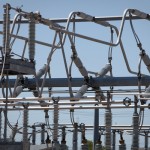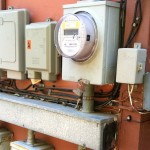There Was Enough Profit in Texas Market Last Year to Build New Power Plants

Photo by Tim Boyle/Getty Images
As things heat up in Texas, everyone's wondering where more power is going to come from.
Everyone’s wondering where Texas is going to get more power.
On Tuesday, Texas hit another record. The grid became stretched, as the heat index rose and air conditioners worked overtime. And before long electric demand hit a record for the month of July, peaking at 65,790 megawatts. (To put that into perspective, one megawatt is enough to power some 200 homes in the state during times of peak demand, according to the Electric Reliability Council of Texas, or ERCOT, which manages the state’s grid.)
And the previous month was no different. On June 25, the grid hit record demand for that month. Then it broke that record the next day. That’s more than the previous record last year, which happened to be our hottest summer ever. And as this week is expected to get hotter, ERCOT is asking consumers to cut back on energy use during the late afternoon and early evening.
What’s going on? Well, to boil it down, we have more people and less power.
So why aren’t we building any new power plants? There’s a common answer: energy companies don’t want to build new power plants because fuel prices are too low. They can’t make enough profit with natural gas prices so low to make back the big investments required to build generating plants.
But according to a new independent study commissioned by the Texas grid, that dog don’t hunt.
The annual study was put together by ERCOT’s Independent Market Monitor. And it says that despite low natural gas prices and a price cap on how much generators can charge for power, there were enough dollars to be made producing electricity in Texas last year to build new natural gas power plants.
“ERCOT average real-time market prices were 35 percent higher in 2011 than in 2010,” the new ERCOT 2011 State of the Market report says. And those prices went up much higher in February and August of last year, two months with extreme weather. As the grid gets closer to peak demand, prices go up, peaking at $3,000 per megawatt hour. And that’s where power companies can really profit.
There were almost 30 hours last year where the peak price for power was hit. “That cap was then the highest in the nation and represented prices about 100 times higher than those typically seen for wholesale energy,” Jake Dyer of the Recharge Ratepayer Report writes on his blog. As of this week, that cap has been raised to $4,500 and could go up even higher in coming years, up to $9,000.
It all brings up the question: If power generators make the most profit when the grid is squeezed, does raising the amount they can charge during those times of peak demand actually discourage them from building new power plants? That’s what everyone will be watching out for in the coming months and years.
And there’s something of a caveat to all of this. “Even with the improvements discussed, pricing during shortage intervals may need to be even higher to ensure that investments in new supply and/or demand resources result in maintaining the minimum required installed reserve margin,” the report says. The report finds “that while the high prices should have been sufficient to incentivize new generation in 2011, the margins were nonetheless relatively thin,” Dyer writes.
And who knows if we’ll see such extreme temperatures (and market profits) as we did in 2011 again anytime soon. But the study’s findings are clear: there was enough money to be made in the Texas electricity market last year to justify building new power plants.
You can read the full report here:



